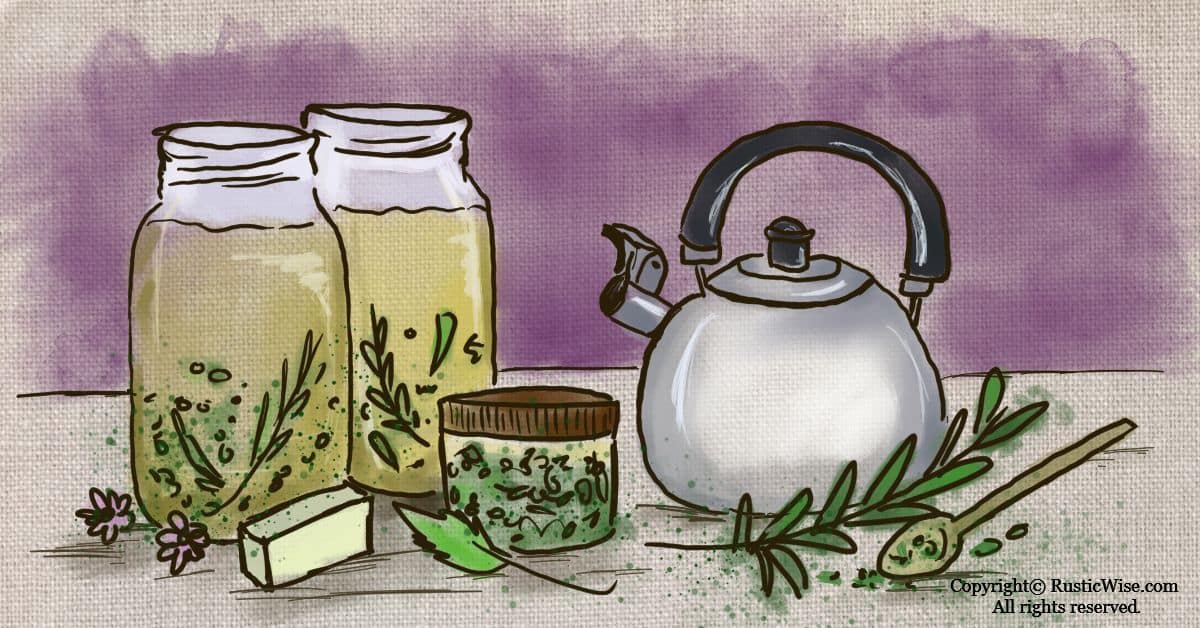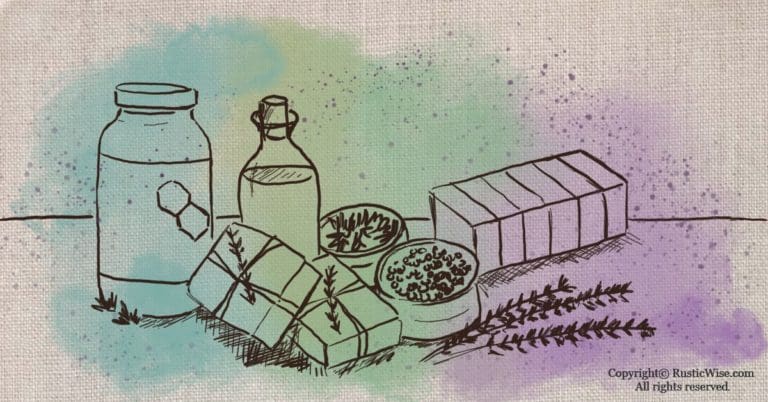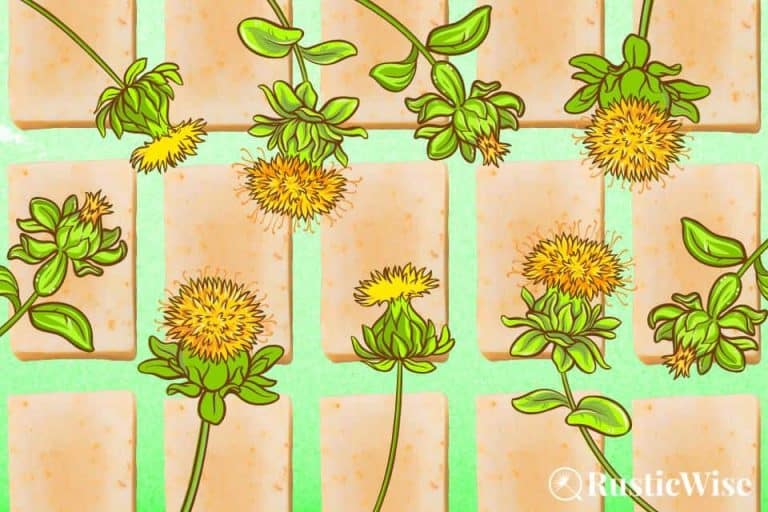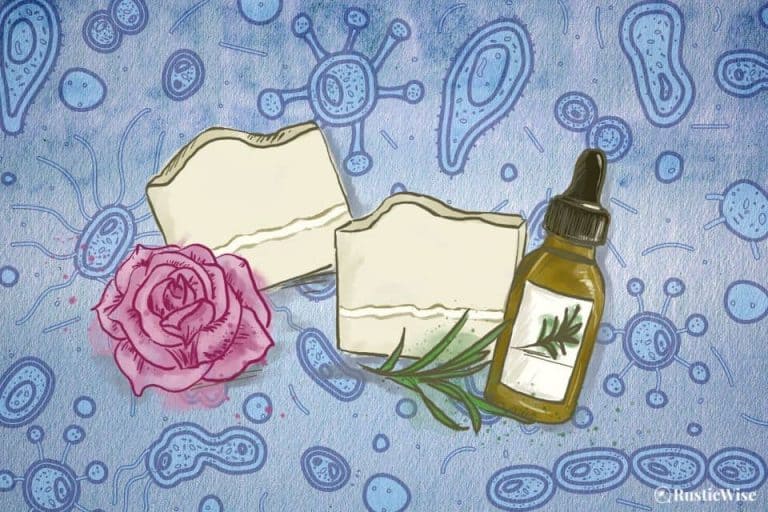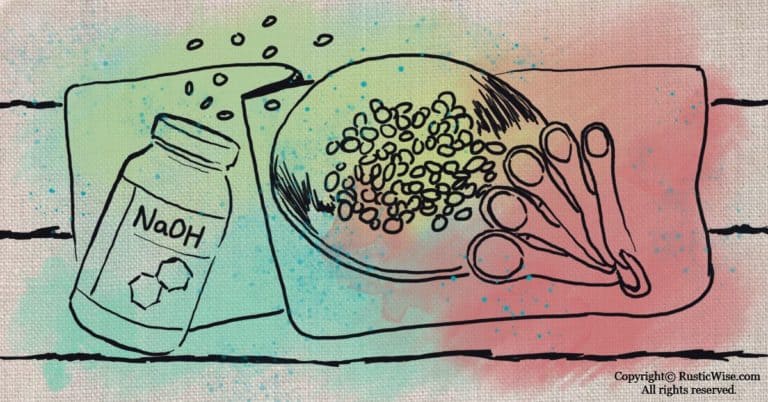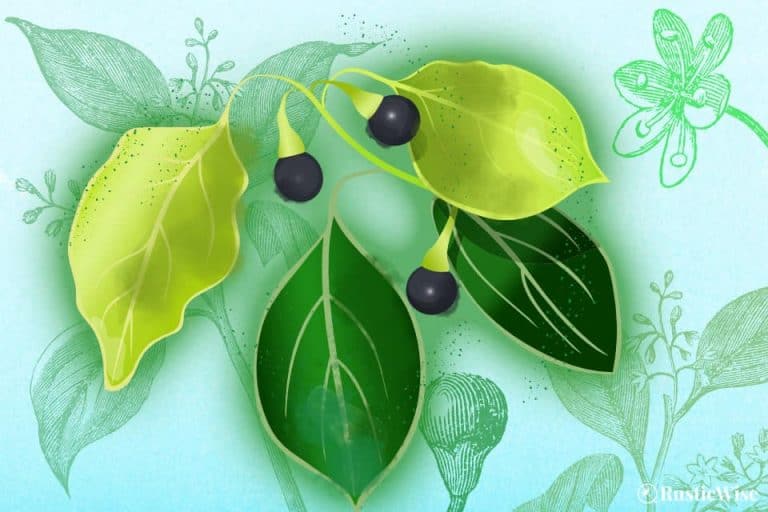How To Make and Use Lye Water Tea for Herbal Soapmaking
There are many ways to add natural herbs and botanicals to your homemade soap. You can sprinkle dried petals on top, or incorporate into the soap. You can make herbal oil infusions. And you can also make herbal soap with lye water tea, or lye water infusions. Adding a touch of herbs to your soap with a lye infusion is as easy as brewing tea and using it in place of normal water in your soap recipe.
We’ll also give you a basic hot process soap recipe which you can customize using your favorite herbs. We’ve included how to make peppermint, lavender, or rosemary soap using tea-lye water. These herbs are perfect for making a bar of lovely bath soap.
Why make lye water infusions for soap?
Making lye water tea with your favorite herbs and botanicals is a great way to add a touch of nature to your soap. Herbs add a touch of color, scent, and medicinal properties to handmade soap. Customizing and experimenting with different herbs is one of the best parts of making your own soap at home!
Herbal oil infusions are also a popular way to incorporate oils into soap. Both oil infusions and lye water tea have their benefits.
The benefit of using lye water tea over oil infusions is time and effort. Oil infusions are made using either cold infusion (which takes several weeks), or hot infusion (which can take several hours). With a lye infusion, it’s as simple as steeping botanicals in hot water for about an hour or so.
It’s important to remember that lye water infusions add a subtle touch to soaps (keyword being subtle!). Don’t expect your peppermint lye water tea to hit you in the face with mintiness. That’s why we add a few drops of essential oil in the recipes below to up the fragrance factor.
Most steeped teas add a touch of earthy tan or light-brown color to soap. The best way to sort through colors is to experiment with different botanicals for yourself.
The role temperature plays on soap’s color
For safety reasons, it’s important to let your tea cool to around room temperature before adding your lye. Don’t add lye while the tea is hot as it produces a very strong exothermic reaction.
The temperature of the tea also affects the color of your finished batch of soap. Generally, the cooler the temperature of the tea, the lighter the soap color. If you want your soap batch darker, use room temperature tea.
Tip: To cool your tea for a lighter-color soap, place in the fridge for several hours before using.
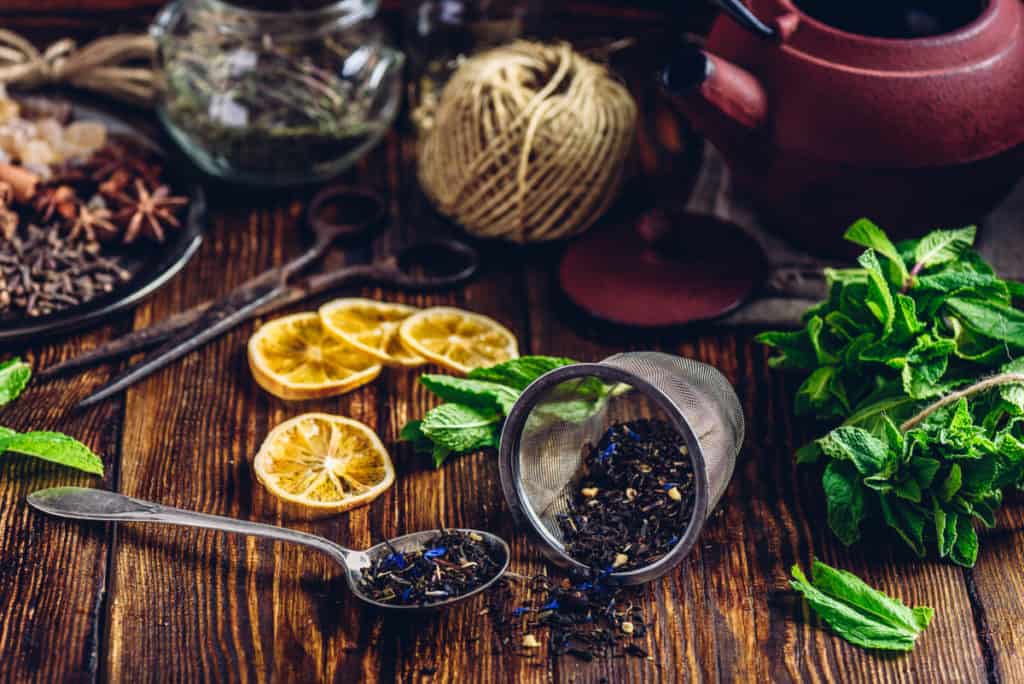
Bleeding in soap from natural herbs
Sometimes it happens. Sometimes natural herbs may “bleed” in homemade soap creating a halo effect. This is perfectly normal and doesn’t affect the soap’s quality, just the aesthetics.
If you’re making a batch of soap for yourself, it may not be a big deal. It’s more of an issue if you’re making soap for others.
Some herbs are more prone to bleeding than others—mint is one example.
Many herbs will turn a brownish color once they’re mixed into soap. This is just a natural reaction when plants come in contact with lye. If you want to your botanicals to retain their color, you could simply sprinkle dried herbs or botanicals on top of soap.
But, if you want to incorporate botanicals into the soap batter, the key is to steep them first.
Tip: To prevent natural herbs from bleeding, steep dried herbs in hot water before using. You can either steep directly in hot water and strain afterwards with a sieve or cheesecloth. Remove the herbs once water has cooled and pat dry. This should help prevent herbal bleeding in your soap!
A note about smells when mixing tea and lye
After looking through some online soap forums, some soapers say they’ve experienced rancid odors and a color change when they add lye to their tea. Personally we’ve not experienced this. Apparently this odor goes away and your finished soap should be fine!
Tips on making your own lye water tea
You can make a herbal tea using fresh or dried herbs, or tea bags. If you have an abundance of fresh herbs from your garden, this is a great way to use them up.
Remember to use distilled water when brewing your herbal infusion. Aim to make a strong tea to allow as much of the natural properties of the herbs shine through in the soap.
General guideline: use roughly 2 tablespoons of dried botanicals per each cup of water. If using fresh herbs, use a generous handful. Making lye water tea is a bit of an experiment. After a try or two, you’ll figure out how strong you’d like to make your lye water tea.
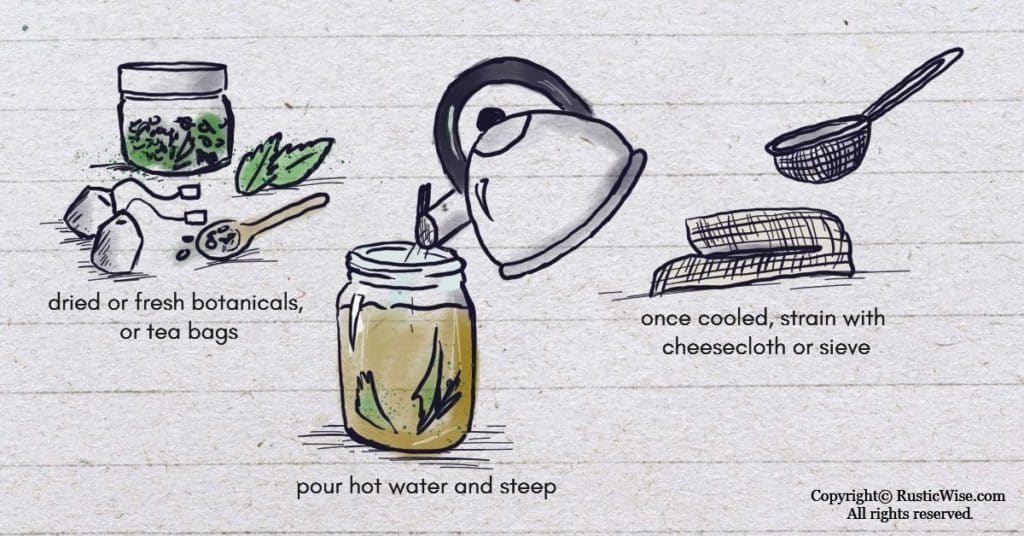
You’ll need:
- Hot water
- Dried or fresh herbs
- Sieve or cheesecloth
- Glass mason jar (or similar)
- Something to stir with
- Boil distilled water.
- Place herbs in your mason jar, or a heat-safe bowl/container.
- Pour hot water over your herbs. Stir well. Allow to steep until water has cooled.
- Strain and remove herbs. You can discard the herbs or incorporate into soap if it’s finely chopped.
- Remeasure the water according to your soap recipe once herbs are removed. Add more water as necessary to account for any evaporation.
Use your herbal tea infusion in place of regular water in your soap recipe.
Using your lye water tea in soap
Now that you’ve made some herbal tea for soapmaking, what next?
We’ll show you how to make three different bath soaps using peppermint, lavender, or rosemary.
Choose peppermint if you’re a morning-shower person for an invigorating lather. If you prefer to take showers in the evening, or just want a calming and soothing bath soap, check out the lavender soap. Rosemary is great for mental stimulation.
We’re using a 2-pound basic hot process soap recipe as our base. (Note: it’s called a 2-pound soap recipe as it uses 2-pounds of oils. It actually yields 3 pounds of soap). This soap calls for a combination of coconut oil, olive, oil, palm kernel oil (plus a bit of castor oil). It makes a firm, long-lasting bar of soap with lovely moisturizing and lathering properties.
You can use this 2-pound basic soap recipe as a base for making your bath soaps. Or you can substitute another basic 2-pound soap recipe of your choice.
Hot process soapmaking
The following hot process recipes are made in a slow cooker. More specifically, it calls for a 3 1/2-quart slow cooker. If you use a slow cooker that’s too small, you’ll risk the chance of your caustic soap batter overflowing. If you use a slow cooker that’s too large, you’ll need to be careful of your soap batter drying out.
If you’re new to soapmaking, please read up on lye safety first. Yes, hot process soap requires handling lye!
These bath soap recipes are adapted from “DIY Artisanal Soaps: Make Your Own Custom, Handcrafted Soaps!” by Alicia Grosso.
Peppermint bath soap
Yield: 3 pounds (or around 12, 4-ounce bars)
Cook time: 3 hours
You’ll need about three 1-pound soap loaf molds (or similar).
Oils:
- 21.28 ounces olive oil (1.33 pounds)
- 3 ounces palm kernel oil
- 10 ounces coconut oil
Lye mixture:
- 12 ounces peppermint tea
- 4.5 ounces lye
After trace:
- 1 ounce castor oil
- 1 tablespoon mint (dried and finely ground). If making your tea with mint tea bags, you can use the contents to add to your soap.
- 1/2 teaspoon peppermint essential oil
Tip: Prepare your work area before you get started. Work in a well-ventilated room. Cover your work surface, gather together all necessary ingredients and supplies. If you’re using wooden soap loaf molds, line them with freezer paper ahead of time. And remember to keep little ones and pets away!
- Make a strong mint tea (see above for instructions). Allow tea to cool and remove mint leaves or tea bags. Ensure you have 12 ounces remaining once mint leaves are removed.
- Measure and combine olive oil, palm kernel oil, and coconut oil. Melt in slow cooker on low.
- Time to put on your safety gear! Using your tea, measure it carefully into a heat and lye-safe container. Measure lye and slowly add to tea. Be careful as your tea-lye water will get extremely hot!
- Let your tea-lye solution cool. In the meantime, heat your oil mixture to 110 degrees Fahrenheit (43 degrees Celsius). When your tea-lye water and oils are both 110 degrees, slowly and carefully add the lye mixture to oils.
- Use an immersion (stick) blender to stir to medium trace. Add castor oil.
- Continue cooking the soap mixture on low for 3 hours. Monitor and check the soap mixture every 30 minutes. Check the pH. Continue cooking until soap batter is neutralized.
- Stir dried mint into the neutral soap batter. Add the peppermint essential oil right before packing into molds. Stir. Peppermint EO is very strong and potent!
- Pack into soap molds. Let your soap harden for at least 24 hours. Unmold, cut, and store.
Enjoy!
Note: While you can safely use hot process soap once it’s hardened, it’s best to cure it for at least one week (preferably longer). Curing allows any excess moisture to evaporate. This curing time makes for a harder, longer lasting bar of soap.
Lavender bath soap
Now that you know how to make a herbal tea infusion and how to incorporate it into a basic soap recipe, you can apply the same process to other herbs.
Here’s how to do the same with lavender, a lovely, soothing botanical.
- Follow the 2-pound peppermint bath soap recipe above.
- Make your lavender tea infusion by using 2 tablespoons of dried lavender flowers for each cup of water.
Instead of using mint, use:
- 1 tablespoon dried lavender flowers
- 1 teaspoon lavender essential oil
Rosemary bath soap
Rosemary is a herb that’s known for its mental stimulation and purported memory enhancement. If you have a big test, or important day at work, lather up with this rosemary bath soap beforehand!
Rosemary’s aroma is also said to boost mood and relieve stress.
Here’s how to make a rosemary bath soap based on the instructions above.
- Follow the 2-pound peppermint bath soap recipe above.
- Make your rosemary tea infusion by using 2 tablespoons of dried rosemary for each cup of water.
Instead of using mint, use:
- 1 tablespoon finely chopped rosemary leaves
- 1 teaspoon rosemary essential oil
Enjoy your bath soaps!
New to making soap? 🧼❓
👉We have a fantastic overview on the whole soapmaking process here: read our Timeless Guide To Soapmaking.
If you would like to see our soapmaking posts organized by topic type, see our Soapmaking Collection.

References:
- Grosso, Alicia (2016). DIY Artisanal Soaps: Make Your Own Custom Handcrafted Soaps! Adams Media. ISBN 978-1-4405-9408-3.
- Flushing Hospital Medical Center, The Health Benefits of Rosemary, https://www.flushinghospital.org/newsletter/the-health-benefits-of-rosemary/. Accessed March 2021.

Author: Theresa Tesolin
Theresa is co-founder of RusticWise. She helps people unleash their inner DIY spirit by encouraging them to get dirty and make or grow something from scratch.

